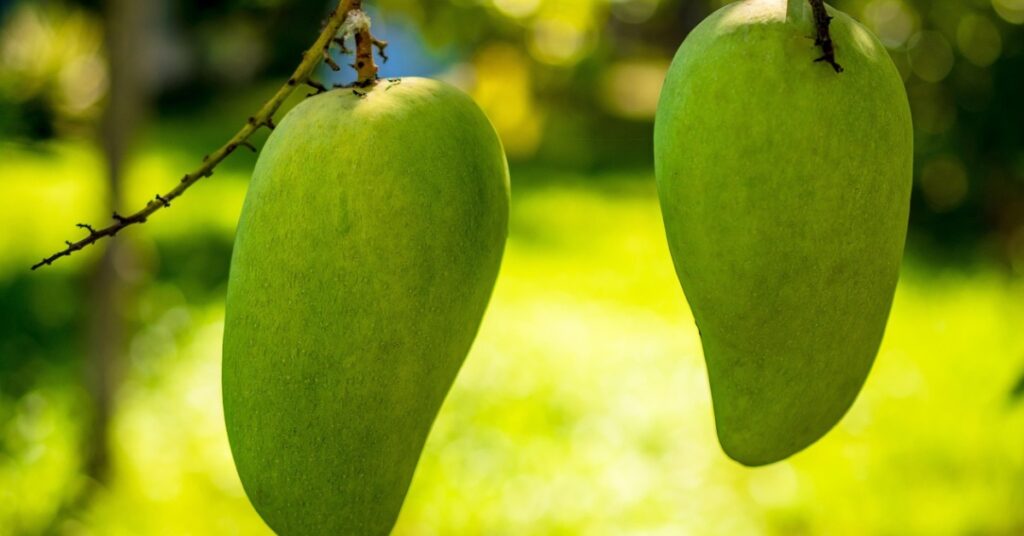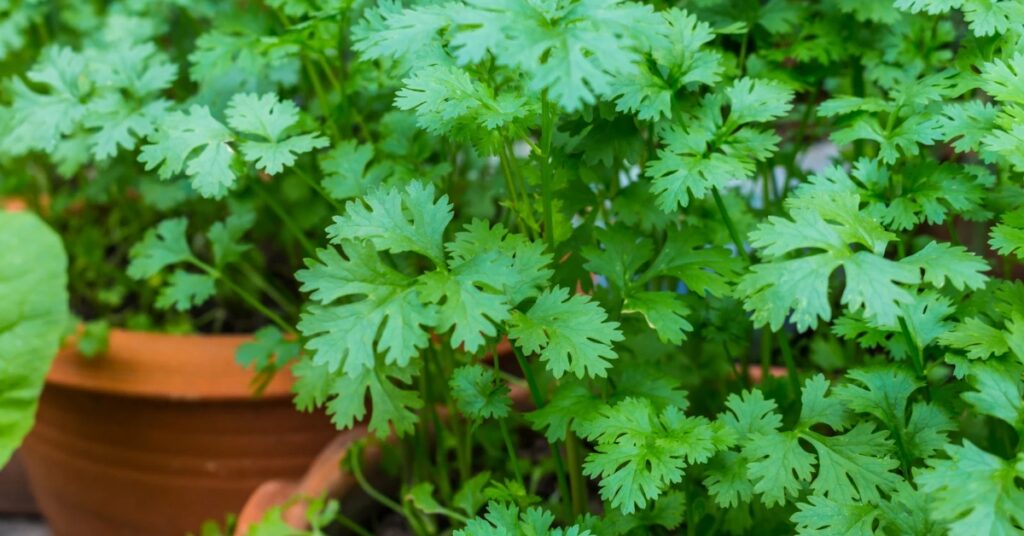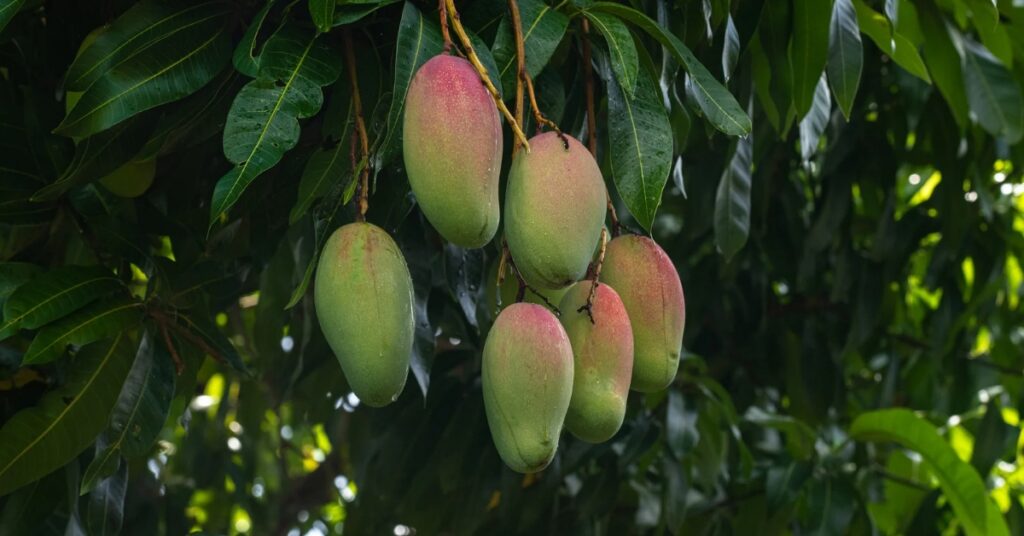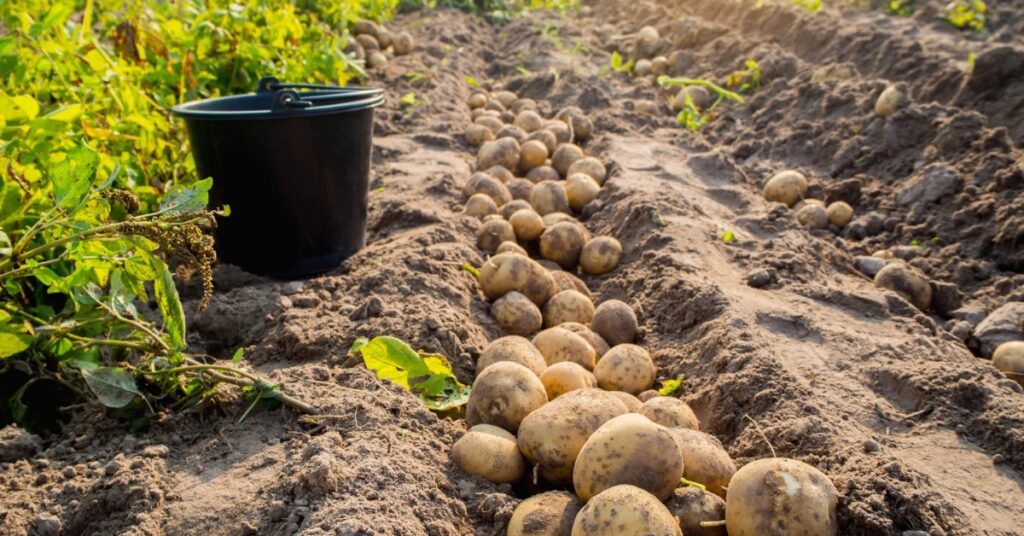Mangoes, known as the “king of fruits,” are cherished for their sweet taste and nutritional value. However, growing healthy mango trees can be challenging due to various pests, diseases, and environmental issues. Identifying and addressing these problems early is crucial for maintaining good fruit quality and yield.

✅ Mango Fruit Drop
Causes:
🌸 Poor Pollination
Inadequate pollination leads to flower drop or poor fruit development.
Examples: lack of pollinators like bees, unfavorable weather during flowering.
💧 Water Stress
Both water shortage and excess moisture can stress the plant.
Results in wilting, flower drop, and poor fruit set.
🧪 Nutrient Deficiency (Especially Boron & Potassium)
Deficiency in key nutrients affects flower formation and fruit retention.
Boron: crucial for pollen tube growth.
Potassium: essential for fruit development.
🐛 Pest or Disease Attacks
Pests like thrips or diseases like blossom blight can damage flowers.
This causes early flower or fruit drop.
✅ Major Causes of Poor Fruit Setting
🌸 Poor Pollination
➤ Inadequate pollination leads to flower drop and reduced fruit formation.
➤ Causes: Lack of pollinators (like bees), high temperature, or excessive humidity.
💧 Water Stress
➤ Both drought and overwatering can disrupt flower and fruit development.
➤ Leads to wilting, flower abortion, or poor fruit retention.
🧪 Nutrient Deficiency (Boron & Potassium)
➤ Boron is essential for pollen tube growth and fertilization.
➤ Potassium helps in fruit development and reduces flower drop.
➤ Deficiencies result in weak flowering and poor fruit set.
🐛 Pest or Disease Attacks
➤ Insects (e.g., thrips, aphids) or diseases (e.g., blight, mildew) can damage buds and flowers.
➤ Causes direct flower drop or weak fruit formation.
.
✅ Anthracnose Disease
⚠️ Problem
Anthracnose is a fungal disease that causes:
-
⚫ Black spots on leaves, flowers, and fruits
-
📉 Leads to reduced yield and poor fruit quality
🌧️ Causes of Anthracnose
💦 High Humidity & Rainfall
-
Creates ideal conditions for fungal growth
-
Wet leaves stay susceptible for longer periods
🌬️ Spore Spread via Wind and Rain
-
Fungal spores travel through rain splash and wind
-
Easily spreads from infected to healthy plant parts
🛠️ Solutions & Management
✂️ Prune Trees for Better Airflow
-
🌿 Open canopy reduces humidity
-
💨 Promotes faster drying of leaves and flowers
🧴 Apply Fungicides (e.g., Copper Oxychloride)
-
⏱️ Use during flowering stage as a preventive measure
-
🛡️ Protects against infection and spread
🔥 Remove and Burn Infected Plant Parts
-
🗑️ Clean up fallen leaves, infected fruits, and stems
-
🚫 Prevents further spread of fungal spores
✅ Mango Hopper Infestation
🐛 Problem
Mango hoppers are small, sap-sucking insects that:
-
🧪 Extract juice from flowers and young shoots
-
📉 Cause poor fruit setting and flower drop
-
🦠 May transmit secondary infections
💡 Smart Solutions to Control Mango Hoppers
🧴 Spray Neem Oil or Insecticides
-
🌼 Apply during flowering season
-
✅ Use neem oil or recommended insecticides like Imidacloprid
-
🚫 Controls hopper population effectively
🕷️ Encourage Natural Predators
-
🐞 Ladybugs, 🕷️ spiders, and other beneficial insects feed on hoppers
-
🌿 Promote biodiversity and minimize chemical use
🥦 Avoid Excessive Nitrogen Fertilizers
-
🚫 High nitrogen makes plants too lush, attracting more hoppers
-
🧪 Use balanced fertilization to maintain healthy growth
✅ Powdery Mildew in Mango
Problem:
A white, powdery fungal growth appears on flowers and young fruits, often causing fruit abortion and yield loss.
Solutions:
-
🌿 Apply sulfur-based fungicides early in the season for effective control.
-
🌱 Use resistant mango varieties whenever possible.
-
🌬️ Ensure adequate spacing between trees to improve airflow and reduce humidity.
✅ Lack of Flowering in Mango Trees
Problem:
Some mango trees fail to flower or produce very few flowers, affecting fruit production.
Common Causes:
-
❌ Excessive nitrogen fertilizer use.
-
✂️ Lack of proper pruning.
-
🌡️ Young trees or unfavorable climatic conditions.
Solutions:
-
⚖️ Reduce nitrogen and increase potassium in fertilizer formulations.
-
✂️ Prune trees after harvest to stimulate healthy flowering.
-
💧 Use flowering-inducing sprays like paclobutrazol under expert guidance.
✅ Conclusion
Successful mango cultivation depends on proper care and timely management. By adopting good agricultural practices, balanced nutrient management, and sustainable pest and disease control methods, farmers and gardeners can nurture healthy trees and enjoy abundant harvests.





